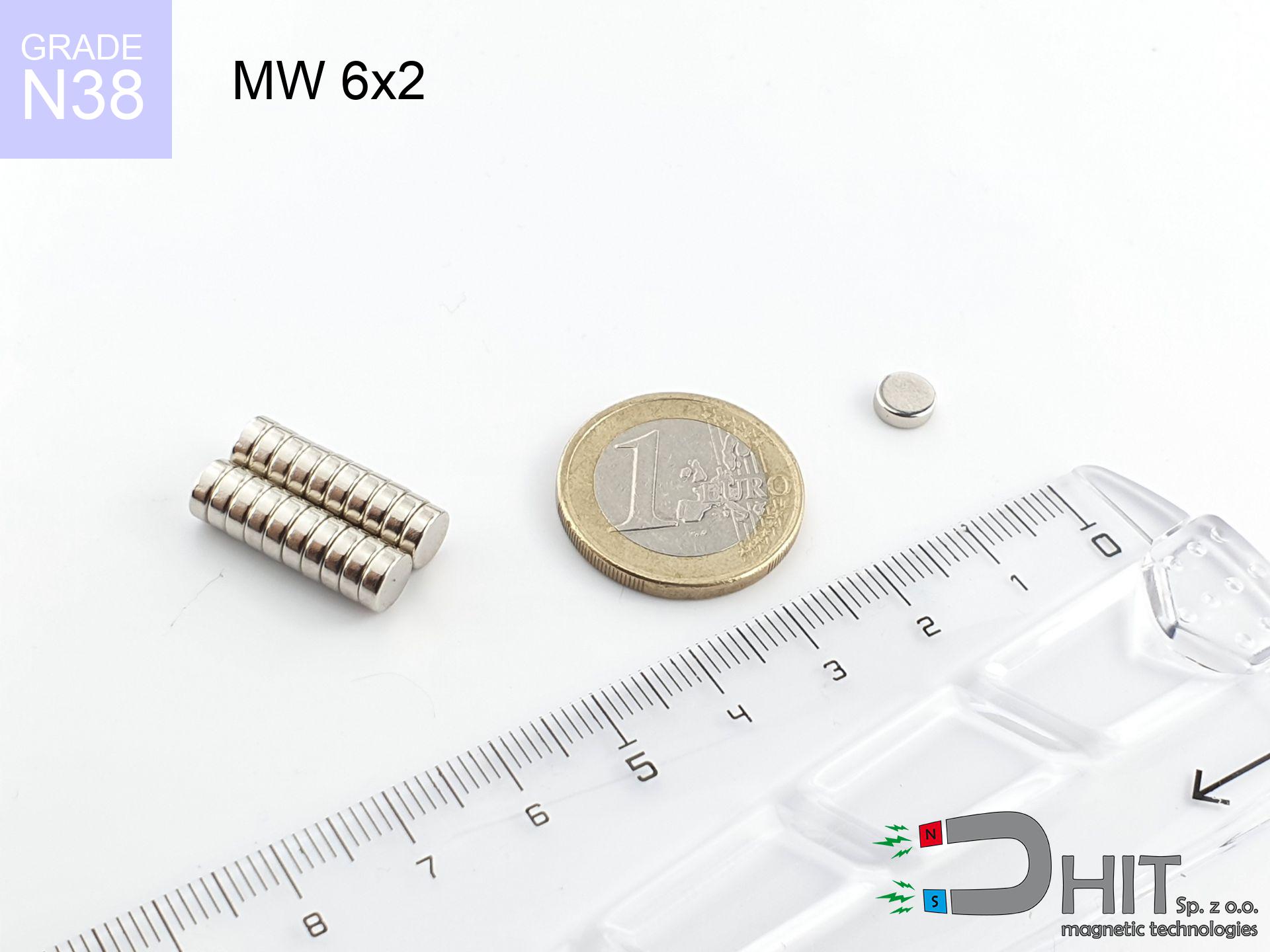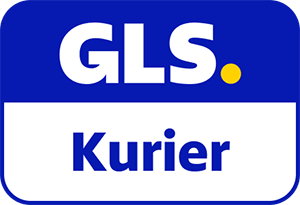UMGZ 25x17x8 [M5] GZ / N38 - magnetic holder external thread
magnetic holder external thread
Catalog no 190323
GTIN/EAN: 5906301813828
Diameter Ø
25 mm [±1 mm]
Height
17 mm [±1 mm]
Height
8 mm [±1 mm]
Weight
25 g
Load capacity
17.00 kg / 166.71 N
12.23 ZŁ with VAT / pcs + price for transport
9.94 ZŁ net + 23% VAT / pcs
bulk discounts:
Need more?
Give us a call
+48 888 99 98 98
otherwise get in touch by means of
contact form
through our site.
Lifting power along with structure of a neodymium magnet can be tested using our
our magnetic calculator.
Orders submitted before 14:00 will be dispatched today!
Technical - UMGZ 25x17x8 [M5] GZ / N38 - magnetic holder external thread
Specification / characteristics - UMGZ 25x17x8 [M5] GZ / N38 - magnetic holder external thread
| properties | values |
|---|---|
| Cat. no. | 190323 |
| GTIN/EAN | 5906301813828 |
| Production/Distribution | Dhit sp. z o.o. |
| Country of origin | Poland / China / Germany |
| Customs code | 85059029 |
| Diameter Ø | 25 mm [±1 mm] |
| Height | 17 mm [±1 mm] |
| Height | 8 mm [±1 mm] |
| Weight | 25 g |
| Load capacity ~ ? | 17.00 kg / 166.71 N |
| Manufacturing Tolerance | ±1 mm |
Magnetic properties of material N38
| properties | values | units |
|---|---|---|
| remenance Br [min. - max.] ? | 12.2-12.6 | kGs |
| remenance Br [min. - max.] ? | 1220-1260 | mT |
| coercivity bHc ? | 10.8-11.5 | kOe |
| coercivity bHc ? | 860-915 | kA/m |
| actual internal force iHc | ≥ 12 | kOe |
| actual internal force iHc | ≥ 955 | kA/m |
| energy density [min. - max.] ? | 36-38 | BH max MGOe |
| energy density [min. - max.] ? | 287-303 | BH max KJ/m |
| max. temperature ? | ≤ 80 | °C |
Physical properties of sintered neodymium magnets Nd2Fe14B at 20°C
| properties | values | units |
|---|---|---|
| Vickers hardness | ≥550 | Hv |
| Density | ≥7.4 | g/cm3 |
| Curie Temperature TC | 312 - 380 | °C |
| Curie Temperature TF | 593 - 716 | °F |
| Specific resistance | 150 | μΩ⋅cm |
| Bending strength | 250 | MPa |
| Compressive strength | 1000~1100 | MPa |
| Thermal expansion parallel (∥) to orientation (M) | (3-4) x 10-6 | °C-1 |
| Thermal expansion perpendicular (⊥) to orientation (M) | -(1-3) x 10-6 | °C-1 |
| Young's modulus | 1.7 x 104 | kg/mm² |
Elemental analysis
| iron (Fe) | 64% – 68% |
| neodymium (Nd) | 29% – 32% |
| boron (B) | 1.1% – 1.2% |
| dysprosium (Dy) | 0.5% – 2.0% |
| coating (Ni-Cu-Ni) | < 0.05% |
Ecology and recycling (GPSR)
| recyclability (EoL) | 100% |
| recycled raw materials | ~10% (pre-cons) |
| carbon footprint | low / zredukowany |
| waste code (EWC) | 16 02 16 |
View more proposals
Advantages and disadvantages of rare earth magnets.
Benefits
- They virtually do not lose power, because even after 10 years the decline in efficiency is only ~1% (based on calculations),
- Neodymium magnets remain remarkably resistant to demagnetization caused by magnetic disturbances,
- The use of an aesthetic finish of noble metals (nickel, gold, silver) causes the element to look better,
- They show high magnetic induction at the operating surface, which improves attraction properties,
- Made from properly selected components, these magnets show impressive resistance to high heat, enabling them to function (depending on their form) at temperatures up to 230°C and above...
- Thanks to freedom in forming and the ability to modify to complex applications,
- Fundamental importance in modern technologies – they are used in HDD drives, drive modules, diagnostic systems, and technologically advanced constructions.
- Thanks to concentrated force, small magnets offer high operating force, with minimal size,
Disadvantages
- At very strong impacts they can break, therefore we recommend placing them in steel cases. A metal housing provides additional protection against damage and increases the magnet's durability.
- We warn that neodymium magnets can reduce their power at high temperatures. To prevent this, we suggest our specialized [AH] magnets, which work effectively even at 230°C.
- Magnets exposed to a humid environment can corrode. Therefore during using outdoors, we suggest using water-impermeable magnets made of rubber, plastic or other material protecting against moisture
- Due to limitations in creating nuts and complicated forms in magnets, we propose using cover - magnetic holder.
- Potential hazard to health – tiny shards of magnets can be dangerous, when accidentally swallowed, which gains importance in the context of child safety. Additionally, tiny parts of these devices are able to be problematic in diagnostics medical when they are in the body.
- High unit price – neodymium magnets cost more than other types of magnets (e.g. ferrite), which increases costs of application in large quantities
Holding force characteristics
Optimal lifting capacity of a neodymium magnet – what it depends on?
- with the contact of a sheet made of special test steel, guaranteeing maximum field concentration
- possessing a thickness of minimum 10 mm to avoid saturation
- with a surface free of scratches
- under conditions of ideal adhesion (metal-to-metal)
- under perpendicular application of breakaway force (90-degree angle)
- in neutral thermal conditions
Lifting capacity in real conditions – factors
- Clearance – the presence of any layer (paint, dirt, gap) interrupts the magnetic circuit, which reduces capacity steeply (even by 50% at 0.5 mm).
- Force direction – catalog parameter refers to detachment vertically. When slipping, the magnet exhibits significantly lower power (typically approx. 20-30% of nominal force).
- Element thickness – to utilize 100% power, the steel must be sufficiently thick. Thin sheet restricts the attraction force (the magnet "punches through" it).
- Steel grade – ideal substrate is high-permeability steel. Hardened steels may have worse magnetic properties.
- Base smoothness – the more even the surface, the larger the contact zone and stronger the hold. Unevenness creates an air distance.
- Heat – NdFeB sinters have a negative temperature coefficient. At higher temperatures they are weaker, and at low temperatures they can be stronger (up to a certain limit).
Lifting capacity testing was performed on a smooth plate of optimal thickness, under perpendicular forces, however under shearing force the load capacity is reduced by as much as fivefold. Additionally, even a small distance between the magnet’s surface and the plate reduces the load capacity.
Safety rules for work with NdFeB magnets
Skin irritation risks
It is widely known that nickel (the usual finish) is a potent allergen. If you have an allergy, refrain from touching magnets with bare hands and opt for coated magnets.
Heat warning
Watch the temperature. Heating the magnet to high heat will ruin its magnetic structure and pulling force.
Do not drill into magnets
Fire warning: Neodymium dust is highly flammable. Do not process magnets in home conditions as this may cause fire.
Do not underestimate power
Use magnets consciously. Their huge power can shock even professionals. Plan your moves and do not underestimate their power.
Keep away from children
Adult use only. Tiny parts can be swallowed, leading to severe trauma. Store out of reach of kids and pets.
Bone fractures
Risk of injury: The attraction force is so great that it can result in blood blisters, pinching, and broken bones. Protective gloves are recommended.
GPS Danger
A powerful magnetic field negatively affects the functioning of compasses in phones and navigation systems. Do not bring magnets close to a smartphone to avoid breaking the sensors.
Safe distance
Powerful magnetic fields can destroy records on credit cards, HDDs, and storage devices. Keep a distance of at least 10 cm.
Health Danger
Life threat: Neodymium magnets can turn off pacemakers and defibrillators. Stay away if you have medical devices.
Beware of splinters
Despite metallic appearance, neodymium is brittle and cannot withstand shocks. Do not hit, as the magnet may crumble into hazardous fragments.

![Magnet with screw UMGZ 25x17x8 [M5] GZ / N38 Magnet with screw UMGZ 25x17x8 [M5] GZ / N38](https://cdn3.dhit.pl/graphics/banners/magnet.webp)
![UMGZ 25x17x8 [M5] GZ / N38 - magnetic holder external thread](https://cdn3.dhit.pl/graphics/products/um-25x17x8-m5-gz-keb.jpg)
![UMGZ 25x17x8 [M5] GZ / N38 - magnetic holder external thread - ujęcie 2](https://cdn3.dhit.pl/graphics/products/umgw-25x17x8-m5-gz-bak.jpg)
![SM 32x500 [2xM8] / N42 - magnetic separator SM 32x500 [2xM8] / N42 - magnetic separator](https://cdn3.dhit.pl/graphics/products/sm-32x500-2xm8-jan.jpg)


![UMP 107x40 [M8+M10] GW F 400 kg / N38 - search holder UMP 107x40 [M8+M10] GW F 400 kg / N38 - search holder](https://cdn3.dhit.pl/graphics/products/ump107x40-m8+m10-gw-f-400-kg-mup.jpg)

